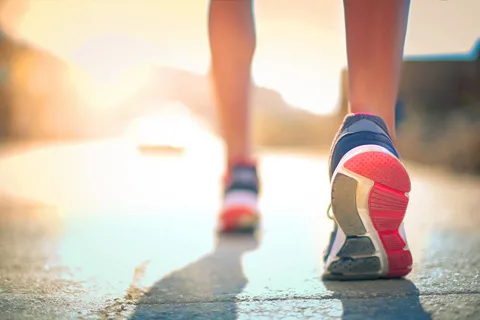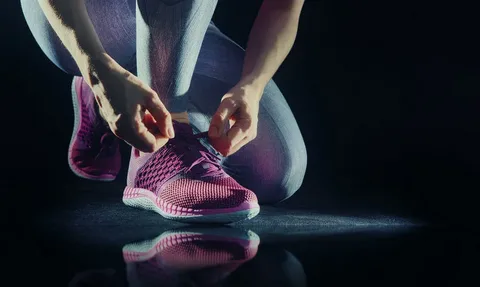Are you dealing with bone spurs and struggling to find comfortable shoes for everyday wear? If so, you’re not alone. Bone spurs can be painful, making it difficult to find shoes that provide enough support and cushioning. Fortunately, there are several options available that can help you stay comfortable and mobile. In this blog post, we’ll discuss the Best Shoes for Bone Spurs to feel like they’re walking on cloud nine.
Understanding Bone Spurs and How They Affect Your Feet
Bone spurs, also known as osteophytes, are bony growths that can develop on the bones in your feet. These growths can be caused by repetitive stress, injury, or arthritis. Unfortunately, bone spurs can lead to discomfort and pain, making it difficult to find shoes that provide the necessary support and cushioning.
Bone spurs can affect the alignment and movement of your feet, resulting in foot pain, swelling, and limited mobility. This can make everyday activities, such as walking or standing, challenging and uncomfortable.
When choosing the right shoes, understanding how bone spurs affect your feet is essential. It’s important to look for shoes with adequate arch support, cushioning, and stability. Additionally, shoes with a roomy toe box can help alleviate pressure on the affected areas.
Factors to Consider When Choosing Shoes for Bone Spurs
When finding the perfect shoes for bone spurs, several important factors must be considered.
- First and foremost, look for shoes that offer excellent arch support. This is crucial for providing stability and reducing the pressure on the affected areas. Additionally, cushioning is essential to absorb shock and provide comfort throughout the day. Look for shoes with ample cushioning in the heel and midsole.
- Another factor to consider is the stability of the shoe. Shoes with a firm heel counter and a supportive midsole can help maintain proper alignment and reduce foot strain. A roomy toe box is also crucial to prevent further irritation and discomfort.
- Lastly, it’s important to consider the overall fit and size of the shoe. Shoes that are too tight or too loose can exacerbate foot pain and discomfort. Take the time to measure your feet and try on different sizes to ensure a perfect fit.
Top Features to Look For In Best Shoes for Bone Spurs Designs for Supporting
When it comes to finding the Best Shoes for Bone Spurs, there are several top features to look for in shoe designs that will provide the necessary support and comfort. Firstly, consider shoes with excellent arch support. This feature helps to distribute your weight evenly and reduce the pressure on the affected areas. Cushioning is also crucial in absorbing shock and providing all-day comfort.
Look for shoes with ample cushioning in the heel and midsole. Another important feature to consider is stability. Shoes with a firm heel counter and supportive midsole can help maintain proper alignment and reduce foot strain. Lastly, a roomy toe box is essential to prevent further irritation and discomfort. By choosing shoes with these top features, you’ll be well on your way to finding the perfect pair to support your feet and help alleviate the pain caused by bone spurs.
Finding the Right Fit: How to Ensure Your Shoes Are Perfect For Your Bone Spurs
Finding the right fit is crucial when choosing shoes for your bone spurs. Ill-fitting shoes can exacerbate your pain and discomfort, so it’s important to take the time to find the perfect pair. Here are some tips to ensure your shoes are perfect for your bone spurs:
- Measure your feet: Measure your feet to determine the correct shoe size. Remember, your feet may change over time, so measuring each time you buy new shoes is important.
- Try before you buy: Be bold and try on multiple pairs of shoes before deciding. Walk around them, pay attention to discomfort or pressure points, and ensure they feel supported and comfortable.
- Consider adjustable features: Look for shoes with adjustable features, such as laces, straps, or buckles. This allows you to customize the fit to your needs, ensuring maximum comfort.
- Test for toe room: Check for a roomy toe box that allows your toes to wiggle and move freely. This helps to prevent any additional pressure or irritation on your bone spurs.
- Remember socks: Consider the socks you’ll wear with your shoes. If you use orthotic inserts or insoles, have enough space to accommodate them comfortably.

Insoles and Inserts: Maximizing Comfort and Support for Your Bone Spurs
Insoles and inserts can be game-changers when finding relief for your bone spurs. These simple shoe additions can provide the extra support and cushioning your feet need. Insoles are typically removable and can be replaced with custom orthotics or gel inserts for a more personalized fit. They help distribute your weight evenly and reduce pressure on the affected areas.
Gel inserts, on the other hand, offer extra cushioning and shock absorption, reducing the impact with each step. Whether you choose orthotics or gel inserts, these additions can maximize your comfort and support, allowing you to walk easily. Choose insoles and inserts designed for bone spurs to ensure the best possible relief. Say goodbye to discomfort and hello to blissful steps with the help of insoles and inserts!
A Step-By-Step Guide to Breaking in New Shoes with Bone Spurs
Breaking into new shoes can be challenging, especially when dealing with bone spurs. But don’t worry; we’ve got you covered with a step-by-step guide to help make the process a little easier.
- First, start by wearing your new shoes for short periods, gradually increasing the duration as your feet adjust. This will help prevent discomfort or irritation from wearing them for extended periods.
- Next, focus on stretching and flexing your feet while wearing the shoes. This will help to break into the shoes and make them more comfortable. You can do simple exercises like toe curls and ankle rolls to loosen up the shoes and give your feet some relief.
- If you experience any specific pressure points or discomfort, consider using padding or moleskin to alleviate the pain. This can provide additional cushioning and support in those problem areas.
- Lastly, be patient. Breaking into new shoes takes time, especially when dealing with bone spurs. It’s important to listen to your body and give it the time it needs to adjust. Don’t push yourself too hard, and take breaks when needed.
Tips on How to Wear and Care for Your Shoes to Manage Bone Spurs
Now that you’ve found the perfect shoes for your bone spurs, it’s important to know how to wear and care for them to ensure maximum comfort and support. Here are some helpful tips to manage your bone spurs while wearing your shoes:
- Wear them consistently: To get the most benefit from your supportive shoes, wear them consistently. This means wearing them throughout the day, not just when your feet bother you. Consistent wear will help prevent flare-ups and keep your feet properly supported.
- Avoid excessive walking on hard surfaces: Walking on hard surfaces can exacerbate the pain caused by bone spurs. Try to avoid prolonged walking or standing on concrete or other hard surfaces. Opt for softer surfaces like grass or carpet whenever possible.
- Rotate your shoes: Wearing the same pair of shoes every day can lead to wear and tear, affecting their ability to provide support. Consider rotating between two or three pairs of supportive shoes to give them time to recover and maintain effectiveness.
- Keep them clean and dry: Proper shoe hygiene is essential for maintaining their longevity. Clean your shoes regularly and allow them to fully dry before wearing them again. This will help prevent the growth of bacteria and odors, ensuring your shoes stay fresh and comfortable.
- Replace worn-out shoes: As your shoes age, they may lose their cushioning and support. Pay attention to any signs of wear and tear, such as flattened soles or worn-down cushioning. When your shoes show signs of wear, it’s time to invest in a new pair to continue receiving the necessary support for your bone spurs.
Walking On Air: The Best Shoe Materials for Bone Spurs
When finding the best shoe materials for bone spurs, you want to ensure you walk on air. Luckily, several materials can provide the support and comfort you need to alleviate the pain caused by bone spurs.
- One of the top materials to look for is memory foam. This material molds to the shape of your foot, providing customized cushioning and support. It helps distribute your weight evenly and reduces pressure on the affected areas.
- Another great option is EVA (ethylene-vinyl acetate) foam, known for its shock-absorbing properties. It cushions your feet with each step, minimizing the impact and reducing discomfort.
- Additionally, consider shoes made from breathable materials like mesh or leather. These materials promote airflow and help keep your feet cool and dry, preventing the growth of bacteria and odors.
FAQs
Do you have questions about finding the shoes for bone spurs? We’ve got you covered with some frequently asked questions and answers to help you out:
1. Can I wear any shoes if I have bone spurs?
While you should avoid shoes that are too tight or lack support, plenty of shoe options are still available for people with bone spurs. Look for shoes with good arch support, cushioning, stability, and a roomy toe box.
2. Are orthotic inserts necessary for bone spurs?
Orthotic inserts can provide additional support and cushioning but are not always necessary. Some shoes already have built-in arch support and cushioning, so it depends on your individual needs and comfort.
3. How long does it take to break in new shoes for bone spurs?
The time it takes to break in new shoes can vary depending on the individual and the shoes themselves. It’s important to take your time and gradually increase the duration of wear to avoid discomfort.
4. Can I use gel inserts with my Best Shoes for Bone Spurs?
Yes, gel inserts can provide additional cushioning and shock absorption, making them a great option for people with bone spurs. Just make sure to choose inserts that are specifically designed for bone spurs.
Conclusion
When dealing with bone spurs, finding the right pair of shoes can make a difference in your comfort and mobility. By understanding the impact of bone spurs on your feet and considering factors such as arch support, cushioning, and stability, you can find the perfect shoes to alleviate your pain. Remember to take the time to measure your feet, try on different sizes, and consider adjustable features for a personalized fit. Insoles and inserts can provide additional support, while proper shoe care and materials like memory foam and EVA foam can enhance your walking experience. Say goodbye to discomfort and hello to blissful steps with the right shoes for bone spurs!
| Other Good Articles to Read |
| Niche Blogs Connect |
| Blogs 97 |
| Blog Stitution |
| Blogs Unplugged |
| Blogs Cotch Rouge |
| Blog Signatr |
| Blog Sintonias |
| Blog Zilla |
| Consumer Forums |
| Finance Forums |
| G Blogs |



